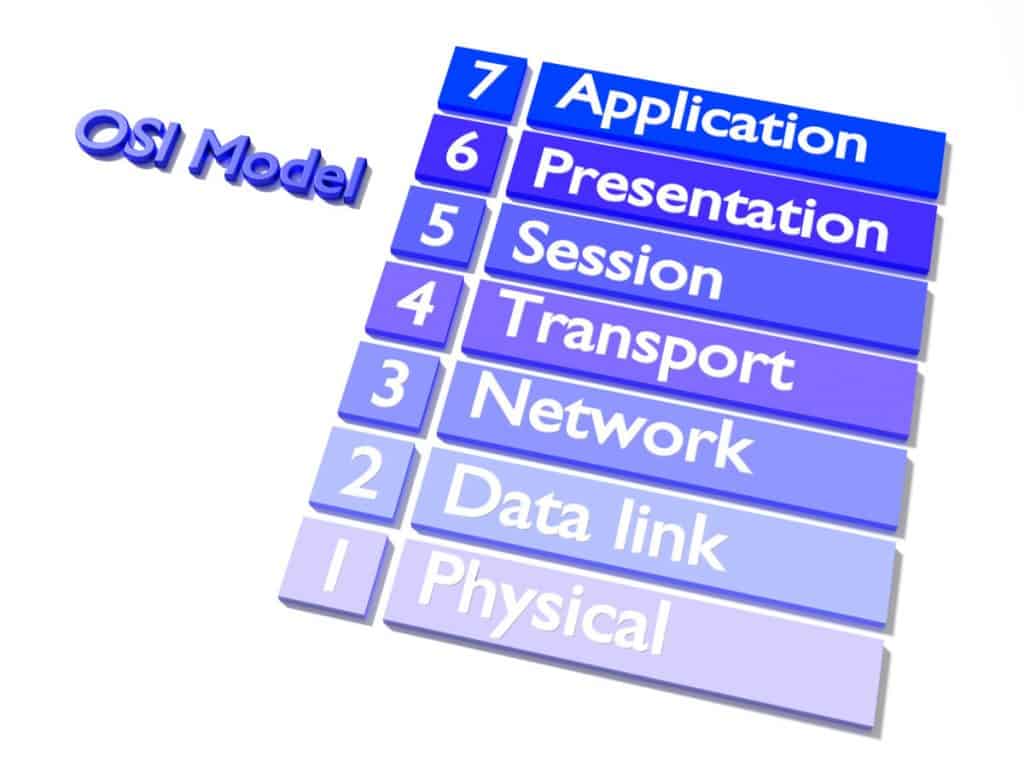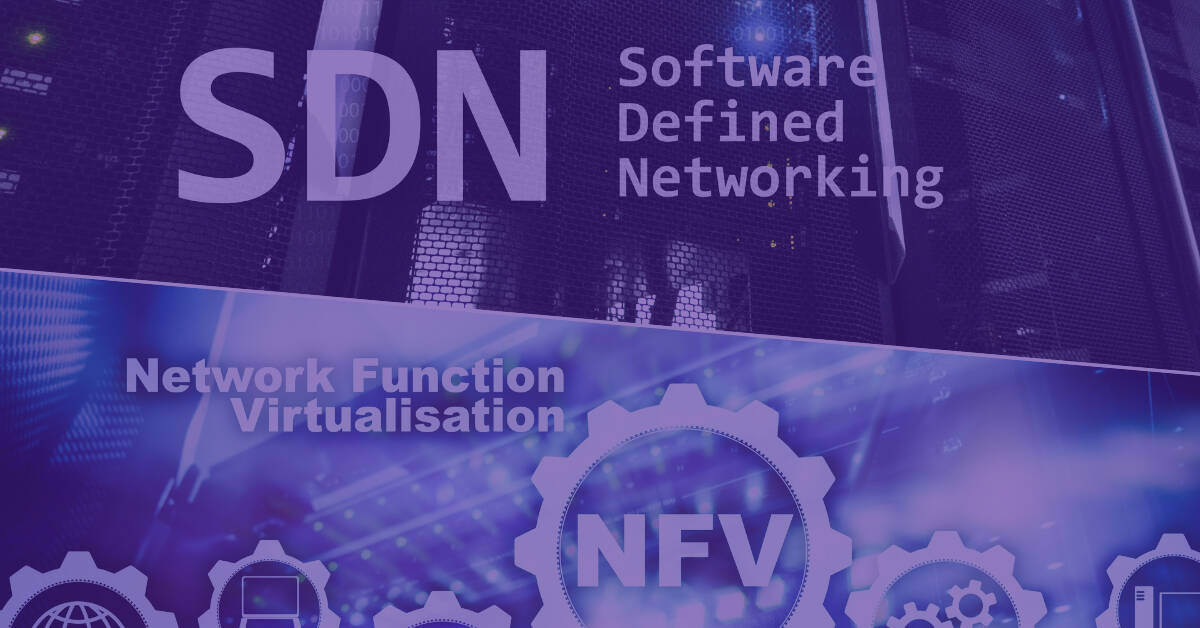Virtualization leads to true innovation in IT. When we look at data networks specifically, we can only see the benefits virtualization has brought to the infrastructure—like ease of management, reusability, and isolation. However, network virtualization is a broad term that encompasses different technologies. In this article, we focus on two popular approaches to network virtualization: software-defined networking (SDN) and network functions virtualization (NFV). We’ll conclude with an overview of how network virtualization prepares networks for edge computing.
What is a Network and How Can it be Virtualized?
A network is a group of two or more devices that can communicate. Traditionally, computer networks have used a mix of hardware and software to direct information through router and switch devices. Information passes through a network in packets, which are broken down pieces of information with smaller file sizes that are then reassembled at destination. Routers are responsible for forwarding packets between computers of different networks, whereas switches connect computers to the same network. The functions of routers and switches can be virtualized, along with other network devices such as firewalls, load balancers, gateways, and hubs.
One of the earliest implementations of network virtualization were virtual local area networks (VLANs). VLANs make it possible for devices physically in different geographical locations to appear as if they were in a single local area network, with a unique broadcast and multicast domain.
VLANs can support multiple networks on the same hardware infrastructure, such as multiple IP addresses on the same switch, meaning that VLANs are adept at scaling network traffic.
Approaches to Network Virtualization
What Is Network Virtualization?
Network virtualization enables network functions usually run on hardware to be delivered as software and managed as a single entity.
To understand what is virtualized in a virtual network, we refer to the OSI model. The Open Systems Interconnection (OSI) model defines the standards for networking. OSI describes a network in seven layers, from the electrical hardware of the physical layer at the bottom to the end-user interface of the application layer at the top.

Network virtualization “softwarizes” functions on the first three layers of the OSI model:
- Physical (cabling, signaling, and basic communication)
- Data Link (addressing traffic)
- Transport (logical addressing and traffic flow control)
Software-defined networking (SDN) and network functions virtualization (NFV) are complementary approaches to managing networks. What is “virtualized” in each case varies. The two concepts were introduced in 2008 and 2012 respectively, and their technologies are governed by standards bodies: the Open Networking Foundation and European Telecommunications Standards Institute.
Software-Defined Networking (SDN)
Software-defined networking involves separating the control plane of a network from the data plane. In a network, the control plane is responsible for guiding how packets should move through a network whereas the data plane (or forwarding plane) is responsible for sending packets to their destinations. Traditionally, the control and data planes are packaged together in a network device. By separating the control and data planes, SDN makes a network programmable, that is, it frees a network from relying on the rules set in a routing table. Instead with SDN, an administrator can program rules in a switch. Switches must be programmed through an SDN controller which uses protocols such as OpenFlow. OpenFlow was introduced around the same time as software-defined networking and is a protocol that allows for the control of switch data planes.
Software-defined networking was originally designed to work on local area networks (LANs). The technology has led to the development of software-defined wide area networks (SD-WANs) for enterprises. SD-WANs connect geographically isolated data centers together.
Mobile carriers and internet service providers use software-defined networking to scale bandwidth during increases in usage. Because network provisioning is programmable, administrators can assign bandwidth to servers at will. Additionally, cloud service providers utilize SDN to support multi-tenant cloud architecture. In multi-tenancy, administrators manage switches to funnel traffic into segregated networks for different tenants.
Network Functions Virtualization (NFV)
While SDN abstracts physical network infrastructure so that networks can be programmable, NFV deploys the functions of a network without the use of physical network devices. Network functions virtualization happens when proprietary network devices such as routers and firewalls are replaced with software versions that deploy on commercial off-the-shelf (COTS) hardware such as ARM and x86.
Key to network functions virtualization are virtual network functions (VNFs). Virtual network functions are the namesake virtualized instances of network functions. These are the virtual routers and virtual firewalls for example. Most VNFs operate inside hypervisors.
Although VNFs (the components) are integral to NFV (the architecture), NFV architecture also consists of a framework that oversees the management, automation, and orchestration (MANO) of VNF components, as well as both the hardware and software-based compute, storage, and networking components that enable network functions to be virtualized. Therefore, NFV architecture isn’t restricted to VNFs or software alone.
Both network functions virtualization and software-defined networking, mentioned in the previous section, decouple hardware and software. The difference to remember between the two network virtualization methods is that NFV imitates the network function on a physical device, so that the function can run on a server, while SDN separates the control and data planes of a network in order for both planes to be programmable.
Network Virtualization Moves from the Cloud to the Edge
At their conception, network virtualization technologies brought about data center modernization. They have been an accelerator for the adoption of cloud computing. Cloud computing permits organizations to access and use shared computing resources located in a public data center via the internet. Network virtualization helped move infrastructures to the cloud since they gave rise to remote administration of networks.
Yet the centralized management of networks in cloud computing has exacerbated an already existing latency problem. While delays in data transmissions were already happening inside local networks, the phenomenon is worse over the internet. Latency worsens in cloud computing because data must travel for longer geographical distances.
A new decentralized approach is on the rise, focusing on reducing the impact of latency for scenarios involving mobility and real-time processing of data.
From Data Networks to Mobile Networks
Network virtualization applies to mobile networks as much as data networks. In mobile telecommunications, network virtualization can partition resources so that different users can transmit data on a single network.
The practice of network slicing uses NFV to overlay multiple virtual networks on a shared physical infrastructure. Because of the plethora of wireless internet devices available (think IoT, smartphones, mobile broadband, etc.), mobile networks need to run applications with different bandwidth requirements. Network slicing configures the optimum grouping of network traffic in order to decrease latency. In this way, network slicing is vital to upcoming 5G mobile networks and mobile edge computing.
Network Virtualization Recapped
By now, you should know what is virtualized in a network, the differences between two common approaches to network virtualization, and how network virtualization helps decentralization. Ormuco’s IaaS and Edge PaaS solutions for cloud and edge computing come equipped with software-defined network (SDN) and network functions virtualization (NFV) capabilities. With Ormuco, enterprises can create and manage virtual data networks, routers, load balancers, and virtual private networks (VPNs). For more details, consult our product features.


